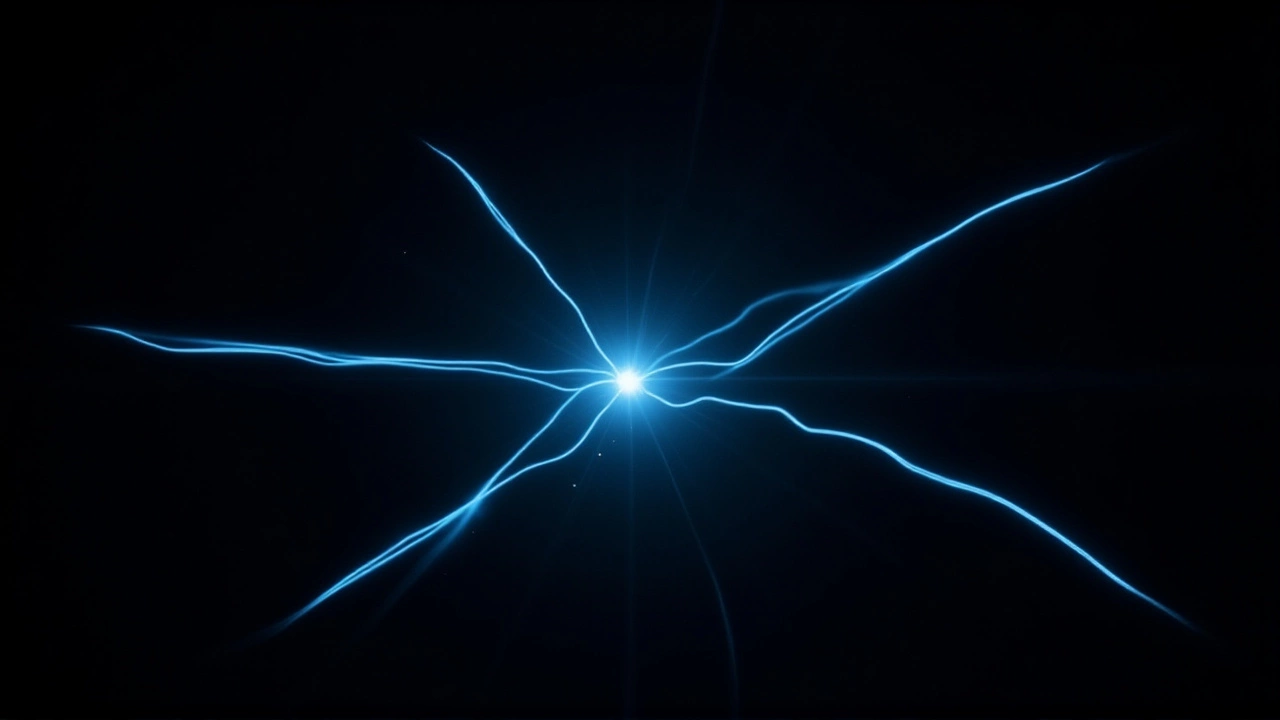On July 1, 2025, an object larger than Manhattan Island and twice the size of the asteroid that wiped out the dinosaurs entered our solar system—and it’s behaving in ways no natural object should. Professor Avi Loeb, theoretical physicist at Harvard University and head of the Galileo Project, is sounding the alarm: 3I/Atlas isn’t just a comet or asteroid. It might be something far more extraordinary. And if he’s right, humanity needs to prepare—not for panic, but for protocol.
Why This Object Breaks the Rules
3I/Atlas is 20 kilometers across. Its mass? Over 33 billion tons. That’s not just big—it’s absurdly massive for something losing mass through outgassing, like a comet. Standard physics says such an object should be shoved off course by the force of its own gas emissions. But 3I/Atlas isn’t. It’s gliding along like a ship on autopilot, maintaining a trajectory that defies gravity’s usual tug-of-war with propulsion. Data from 227 observatories worldwide, collected over five months, confirms it: the object moves exactly as gravity predicts, even as it sheds material. That’s like watching a paper airplane fly perfectly straight while shedding feathers—and not veering an inch.Then there’s the alignment. It’s flying precisely within the plane of our solar system’s planets. Not randomly. Not by chance. And it’s timing its flybys with eerie precision: close to Mars on October 3, 2025, and Jupiter on March 16, 2026. "Why is it fine-tuned to be in that plane?" Loeb asked during a September 28, 2025, interview on Mayim Bialik’s Breakdown. "And why does it arrive when it does?" He didn’t say it outright—but the implication hung in the air: someone—or something—planned this.
A Signal From the Past
The most chilling detail? 3I/Atlas’s origin point lines up almost exactly with the direction of the 1977 "Wow!" signal—the most famous, unexplained radio burst in SETI history. Detected by The Big Ear radio telescope at Ohio State University, that 72-second signal was so intense, astronomer Jerry Ehman wrote "Wow!" on the printout. Decades later, no one has replicated it. Now, a massive object is arriving from the same patch of sky. Coincidence? Loeb doesn’t think so. "We’re not just seeing an object," he said. "We’re seeing a pattern. And patterns don’t emerge from chaos."
And here’s the kicker: the Vera C. Rubin Observatory is expected to detect an interstellar object like this every few months. "We’re not dealing with a one-off," Loeb told FOX 10 Phoenix on October 5, 2025. "We’re entering an era where visitors will be routine. The question isn’t if we’ll see another. It’s whether we’ll be ready."
A Letter to the UN
In October 2025, Loeb sent a formal letter to the United Nations. Not to warn of invasion. Not to demand weapons. But to urge the creation of an international committee—a global response team—to assess and coordinate reactions to future interstellar objects. "If you have a visitor in your backyard," he said, "you don’t ignore it. You learn about it. You decide what to do."
He introduced what he calls the "lobe scale" of risk: a framework to rate potential threats from 1 to 10. Objects scoring above 5? Require immediate strategic planning. 3I/Atlas? He believes it’s close to 10. Why? Because it’s not just big. It’s precise. It’s persistent. And it’s showing no signs of deceleration or erratic behavior.

What’s Next? The Christmas Countdown
According to LADbible’s November 21, 2025 report, the scientific community expects a major revelation by December 25, 2025. Could it be radar data from a deep-space probe? A signal burst? A fragmentation event? Loeb’s team at the Galileo Project is scanning Earth’s atmosphere for debris. "The only way to verify it," he said at timestamp 1798 of the YouTube interview, "is by detecting artificial signals, maneuvering, or seeing it break into mini-probes that visit the planets."
That’s not science fiction. That’s the exact methodology NASA uses to detect atmospheric entry anomalies. And Loeb isn’t alone in his caution. He’s drawing direct parallels to intelligence agencies’ contingency plans for "black swan" events—low-probability, high-impact phenomena. "They prepare for the impossible," he said. "We should too."
The Contradiction: "No Aliens, No Threat"
Not everyone agrees. An anonymous figure named "Duffy," cited in the Economic Times, dismissed the claims on X (formerly Twitter): "No aliens. No threat to life here on Earth." But Duffy offered no data. No analysis. Just a denial. Meanwhile, Loeb’s team has peer-reviewed data, cross-validated by global observatories, and a track record. He’s the same scientist who argued in his 2021 book Extraterrestrial that Oumuamua—the cigar-shaped interstellar object that zipped through our solar system in 2017—was likely artificial. Most scientists scoffed. Now, the same patterns are repeating.

What This Means for Humanity
This isn’t about aliens landing on the White House lawn. It’s about a fundamental shift in how we see our place in the universe. If 3I/Atlas is artificial, it means intelligent life has the capability to send objects across interstellar distances. Not just once. Possibly, regularly. And if that’s true, we’ve been living in a cosmic neighborhood we never knew existed.
What’s at stake? Not survival. Not invasion. But sovereignty. Knowledge. Our right to understand what’s out there before it decides to speak—or act. The Vera C. Rubin Observatory will soon be our new window into the dark. And if Loeb is right, we’re about to see a lot more visitors.
Frequently Asked Questions
Why is Professor Avi Loeb so convinced 3I/Atlas might be artificial?
Loeb points to three anomalies: the object’s mass defies natural outgassing physics, its trajectory aligns perfectly with the solar plane and planetary flybys, and its origin matches the 1977 Wow! signal. No known natural object behaves this way. His team has ruled out conventional explanations like solar radiation pressure or magnetic fields. The precision suggests design—not chance.
What’s the "lobe scale" and how does it work?
The "lobe scale" is Loeb’s proposed risk-rating system for interstellar objects, from 1 to 10. Factors include mass, speed, trajectory precision, energy output, and whether it shows signs of maneuvering or artificial structure. Objects above 5 require international monitoring; above 8, active response protocols. 3I/Atlas scores near 10 due to its size, timing, and unnatural stability.
Could 3I/Atlas be a natural object we just don’t understand yet?
Possibly—but no known natural phenomenon explains how a 33-billion-ton object can lose mass through outgassing without being pushed off course. Even exotic theories like nitrogen ice sublimation or dark matter interactions fail to match the data. Loeb argues that absence of evidence isn’t evidence of absence—and that we’ve been too quick to assume everything in space must be natural.
Why is the Vera C. Rubin Observatory so important here?
The Rubin Observatory, set to begin full operations in 2025, will scan the entire southern sky every few nights with unprecedented sensitivity. It’s expected to detect one interstellar object every few months. If Loeb’s predictions hold, we’ll soon have a catalog of these visitors—letting us spot patterns, track trajectories, and determine whether any show signs of artificial origin.
What happens if 3I/Atlas breaks up or releases probes?
That’s exactly what Loeb’s team is watching for. If the object fragments into smaller, maneuvering bodies—especially ones that approach Earth, Mars, or Jupiter with purpose—it would be the strongest evidence yet of artificial origin. The Galileo Project has already requested access to satellite and radar data from NASA and ESA to monitor for such events in late 2025 and early 2026.
Is there any credible evidence that "Duffy" is a scientist or expert?
No. Duffy is an anonymous Twitter user with no institutional affiliation, no published research, and no data cited. Loeb’s team, by contrast, includes astrophysicists, engineers, and data scientists from Harvard, MIT, and international observatories. In science, claims require evidence—not Twitter posts. The absence of rebuttal from experts speaks volumes.
